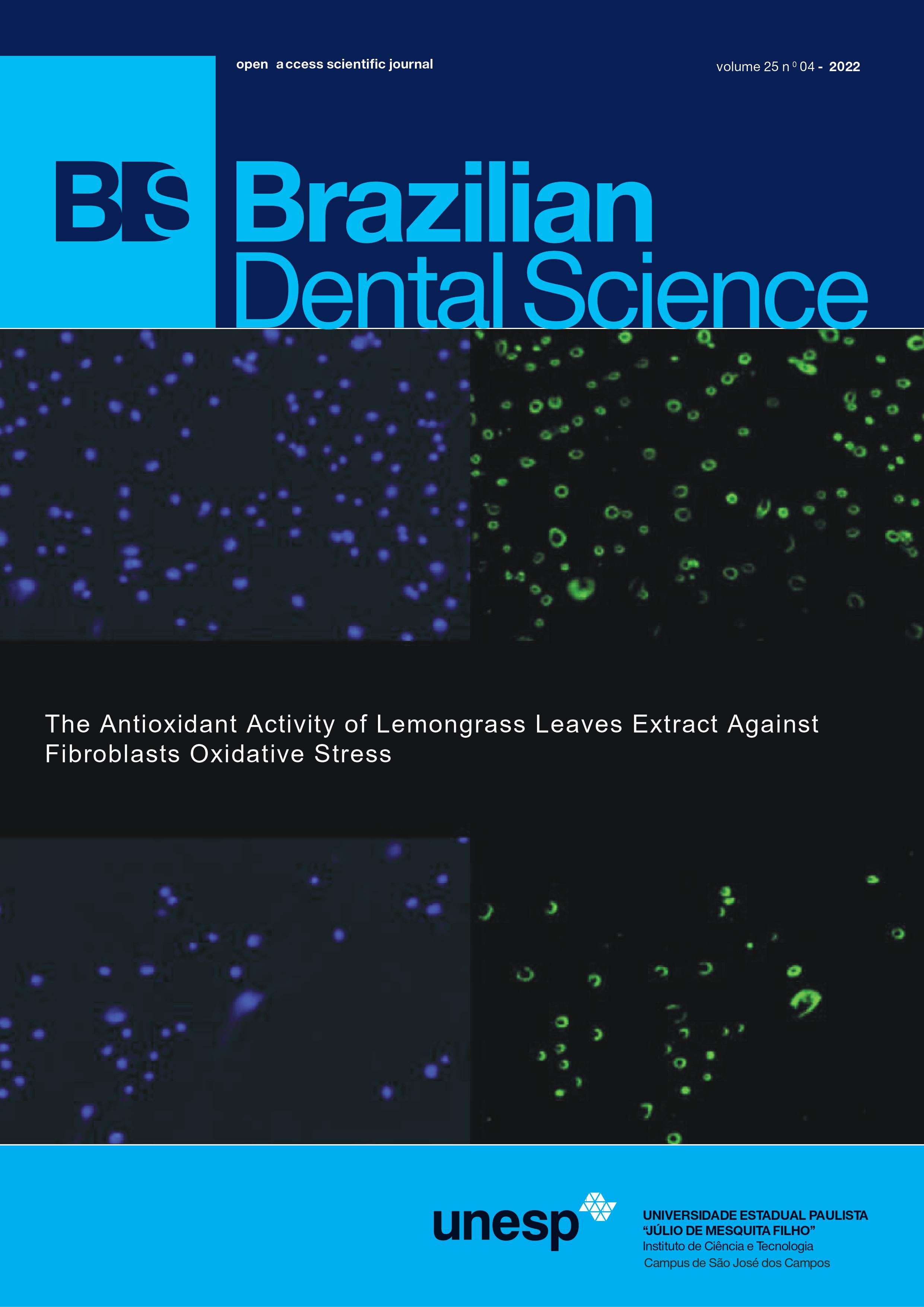Efficacy evaluation of pepsin enzyme-based gel in chemo-mechanical caries removal on primary anterior teeth: a randomized controlled clinical study
DOI:
https://doi.org/10.4322/bds.2022.e3538Abstract
Objective: To evaluate the efficacy of a new pepsin enzyme-based gel compared with Carisolv as a CMCR
agent. Clinical and radiographical evaluations of recurrent caries were made 3 and 6 months after treatment.
Material and Methods: A split-mouth designed randomized controlled clinical study was carried out on 40 primary
anterior teeth of children aged between 4-7 years. Pepsin enzyme-based gel and Carisolv solution were applied
to carious lesions until complete removal of caries. The efficacy of both agents was evaluated by the number of
application times to remove all caries. Recurrent caries were evaluated clinically and radiographically after 3 and 6
months of treatment. Results: Results showed no statistically significant differences in the efficacy of caries removal
by the number of application times (P = 0.919). Concerning recurrent caries, clinical and radiographical evaluation
after three and six months showed no statistically significant differences between the two groups (P = 0.574, P =
0.547, respectively). Conclusion: Pepsin enzyme-based gel can be considered similar to Carisolv gel regarding its
efficacy as a CMCR agent for small carious lesions on primary anterior teeth in children aged 4-7 years old.
KEYWORDS
Carisolv; Chemo-mechanical caries removal; Pepsin enzyme; Caries; Minimally invasive dentistry.
Downloads
Downloads
Published
How to Cite
Issue
Section
License
Brazilian Dental Science uses the Creative Commons (CC-BY 4.0) license, thus preserving the integrity of articles in an open access environment. The journal allows the author to retain publishing rights without restrictions.
=================




























